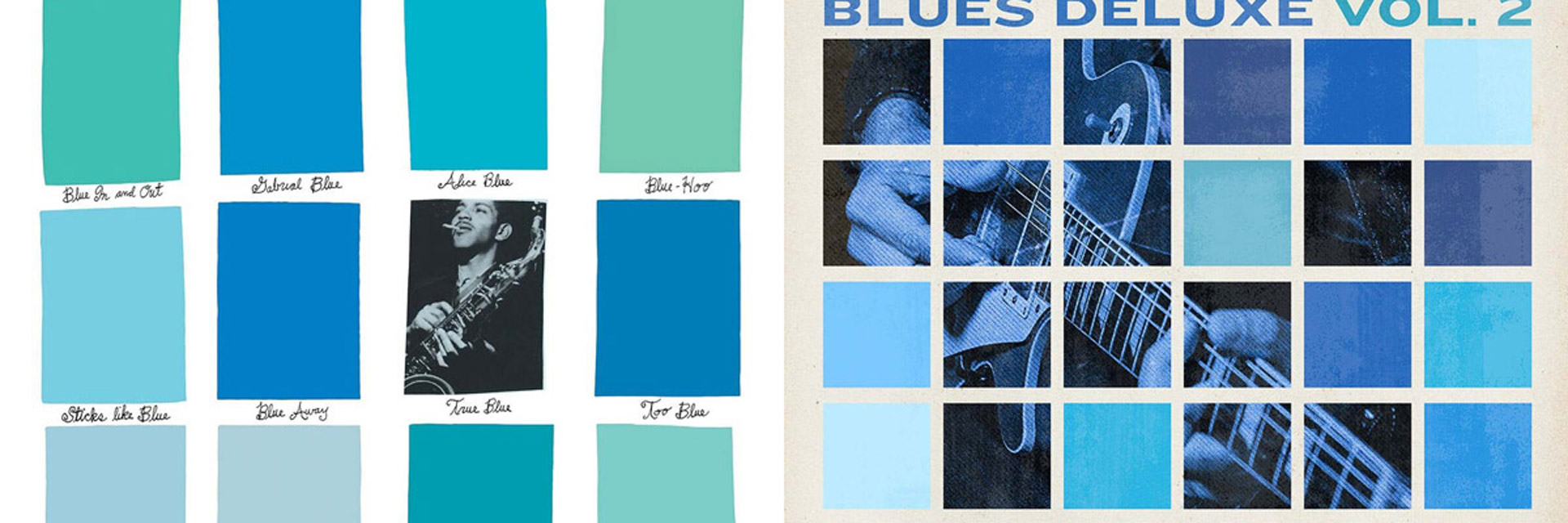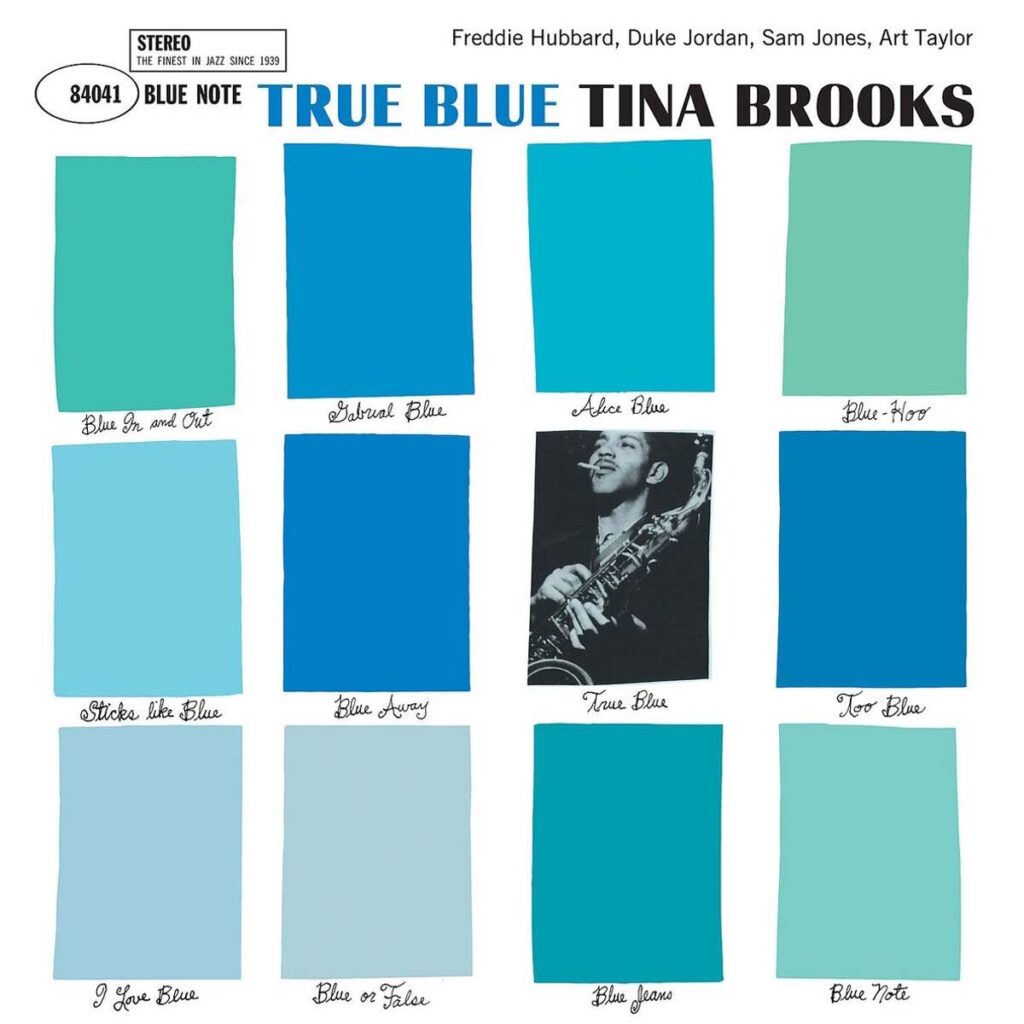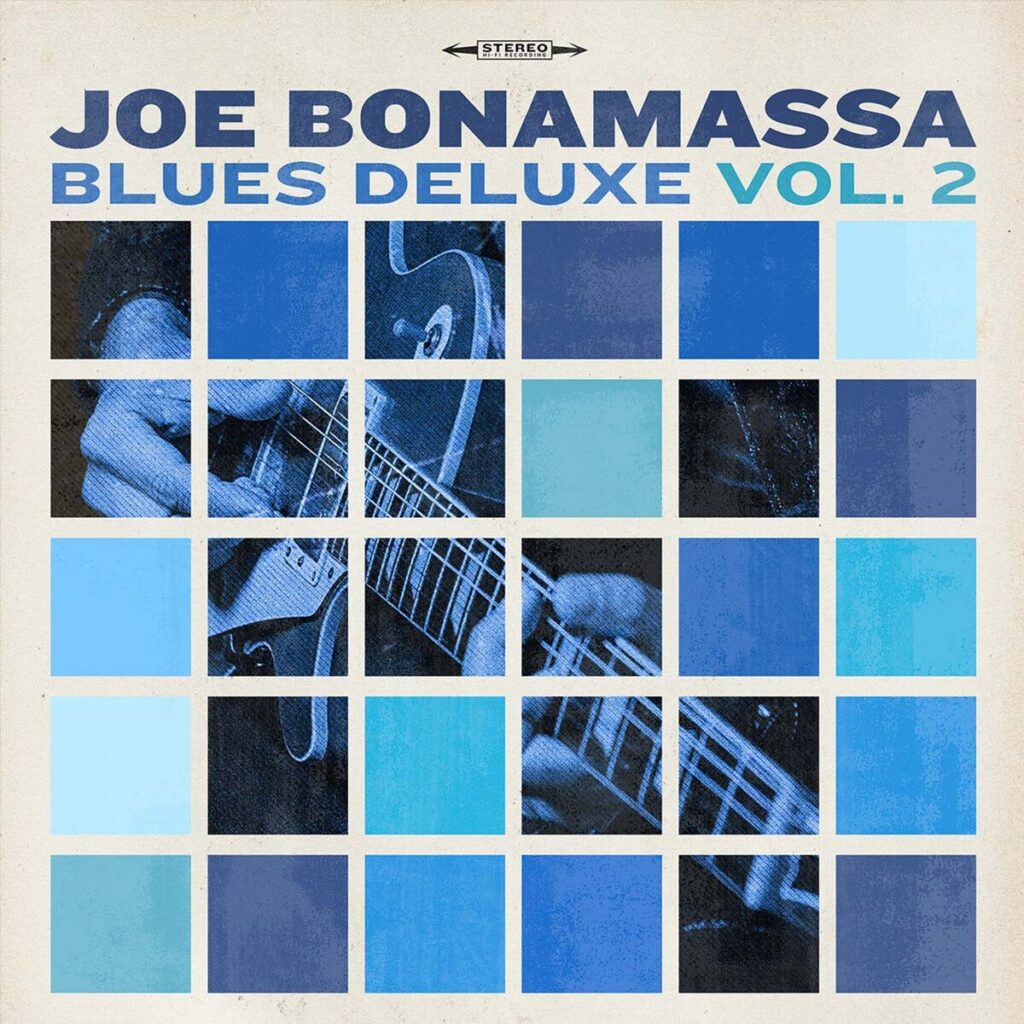The blues – this archaic, elementary song form – it just never gets old.
The possibilities for varying the simple twelve-bar song seem endless – stylistically, formally, harmonically, rhythmically. Alluding to the color in the word “blues” – blue is melancholy – the musicians like to compare their blues variations with different shades, tones and facets of blue. There are bluesy jazz pieces called “Azure”, “Mood Indigo”, “Cobalt Blue” or “Light Blue”. There are albums with titles like Kind Of Blue or Three Or Four Shades Of Blue. On the cover of Tina Brooks’ True Blue, the idea of different blues facets is visually implemented like a color palette.
Incidentally, “True Blue” is also an official shade of blue – but at the same time a slang expression for “sincere”, “dependable”, “loyal”. (This is why Madonna and Billie Eilish, who are not necessarily known as blues interpreters, also have songs with this title). The Blue Note graphic artist Reid Miles, who has certainly often worked with formula guides in his profession, is having himself a little fun here: he names some of his shades of blue “Blue Jeans” or “Blue Note” under or makes puns, referencing to similar-sounding words such as “glue”, “you” and “true”. In the “True Blue” field, he naturally places a photo of the musician – Tina Brooks.
Tina Brooks was one of the many saxophonists who romped around in the hard bop idiom around 1960 – and one of the many who died too soon in modern jazz. (His unusual first name “Tina” came from the nickname “Teeny”, which he had as a child). Brooks had not gone through the “school of jazz”, had not paid his “tuition fees” in the big bands. Rather, he came from rhythm’n’blues, had also studied some harmony and felt ready to make it in the New York hard bop scene at the age of 26. The trumpeter Bennie Harris supported him and introduced him to the Blue Note producer Alfred Lion. Harris enjoyed a certain reputation as a talent scout, as he had once also sponsored Charlie Parker and helped the bebop style in general take off. Harris also wrote some bebop classics such as “Ornithology”, “Crazeology”, “Reets And I” and “Wahoo”.
In 1954, hard bop was starting to take off in New York – and soon threatened to become a fad and a cliché. The Blue Note label, which owed its fame to the success of this style, was churning out hard bop records as if on an assembly line. At times, the producer could no longer keep up with publishing – only the supposed “better sellers” got their turn. Many of the recordings that Lee Morgan, Grant Green and Hank Mobley made for Blue Note in the 1950s and 1960s were only retrieved from the archives and released after 1980.
Tina Brooks did not get any preferential treatment at Blue Note either. Although he led five leader records for the label from 1958 to 1961, only one of them – True Blue – was released at the time. (The others were first released in the 1980s by Blue Note Japan and Mosaic Records). Nevertheless, Brooks was involved as a sideman on several other Blue Note records, most notably with Jimmy Smith, Kenny Burrell and Jackie McLean. This already suggests that he was by no means just an average or inconspicuous soloist. Jazz expert Michael Cuscuna calls him “one of the most brilliant, if underrated, tenor saxophonists in modern jazz”.
Tina Brooks wrote five of the six pieces on the album True Blue herself. The highlights are the openers on both sides of the album – complex, imaginative compositions between hard bop and Latin soul beat (with straight eighths) and with sophisticated vamps for the rhythm section. As a soloist, Brooks combines the expressive “wailing” and “honking” of R’n’B with chromatic jazz runs – this rather unique blend immediately captures the listener’s attention. The horn partner here is 22-year-old trumpet genius Freddie Hubbard. Six days earlier, Brooks and Hubbard had also played together on Hubbard’s debut album.
Joe Bonamassa never gets enough of the blues either. Although not an innovator, he was the guitar star of the early 21st century. Nobody succeeds like Bonamassa in refreshing old songs with new ideas, turning new songs into classics with old tricks and, on top of that, playing the blues rock guitar in an unexpectedly different way. A few years ago, he called a release Different Shades Of Blue – he could have put a blue palette on the cover back then already. In 2023, he did it at last. The album Blues Deluxe Vol. 2 picks up on the idea of a 20-year-old predecessor.
Vol. 1 was the milestone for Bonamassa’s breakthrough in 2003, when his career was in the doldrums after having been dropped by two major labels and his booking agent. Just like back then, he covers fairly unknown blues songs on Vol. 2, rare gems from the repertoire of Bobby Bland, Guitar Slim or Albert King. Bonamassa sings and plays them in a mainstream Memphis sound (with horns and strings) and with a touch of 1960s London blues rock. A piece by early Fleetwood Mac (“Lazy Poker Blues”, 1968) doesn’t feel out of place either.
Tina Brooks: True Blue (Blue Note 28975, 1960)
Joe Bonamassa: Blues Deluxe Vol. 2 (J&R Adventures JRA 93992, 2023)



